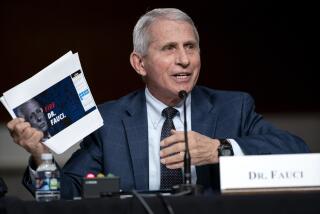The Big Sneeze--and Other Scary Tales
It makes great prime-time color--scarlet arterial blood spurting onto surgical greens under the actor/doctorâs baby blues. Itâs even better as verite hospital medicine, one surgeon coaxing one stalled human heart into thumping life again.
Yet somehow it stands in the penumbra of the wholesale saviors of humankind. The way these heroes did it would make unwatchable television: in a lab, not an operating theater, laboriously tracking swabs on microscope slides, reading columns of morbidity charts.
The men who did this should be as famous as George Clooney: Lister and Ehrlich, Koch and Reed, Semmelweis and his simple charge to doctors that saved more millions than their ministrations ever did: Wash your frigging hands.
This is preventive medicine on an overwhelming scale, hence its name--public health.
The triumph and the hazard of our public health system is that its beneficiaries have smugly forgotten it exists. The discovery of vitamins turned pellagra and rickets into Third World afflictions. Syphilis, which killed Winston Churchillâs father, can be stopped with a syringe. Within memory, vaccinations have routed diseases like diphtheria, which once blazed forth in scarlet quarantine signs on homes high and humble. Smallpox once roamed the earth, dealing death in numbers no serial killer could match; now it exists only in test tubes.
In this big, comfy, modern urb, it is taken for granted that the water you drink is safe, that the kid next to yours in first grade is vaccinated, that the chef and the waiter who feed you do so with clean hands. Vector control--keeping a lid on the mosquitoes and lice and rats that carry disease like a 20-mule team hauls borax? Boooooring. âWhatâs on âChicago Hopeâ tonight?â
*
Dr. Shirley Fannin, Los Angeles Countyâs director of disease control, is one person I am always relieved to see at public meetings. Not only can she be depended on to be intolerant of cant and dither, and to do so with a lively glossary like ânonsenseâ and âpuffery,â but seeing her also means that some tetchy, thin-skinned hierarch hasnât sidelined her forthrightness to paper-pushing oblivion, as the county once tried to do.
Iâd call her a Chicken Little, warning that the sky is about to cave in, except that there is nothing chicken about her, and the sky really could cave in. âSo where,â she is saying to me, âdo we find ourselves at the end of the century? With a failing [health] infrastructure. The things that probably contributed mostâ to lower illness and death in the 20th century--to wit, clean water and good sewage control--âcould be the first thing to threaten us in the 21st century.
âI keep thinking to myself, when is the big break coming? When are we going to have an incident like Wisconsin,â where, in 1993, cryptosporidium in the water supply killed 104, when the public demands--and here she puts on a cartoon voice of shocked, shocked dismay--â âWhatâs happening to this community?â â
Everyone is too caught up in the ailment du jour, like the rare but tabloid-spread âflesh-eating bacteria,â to notice the old killers creeping back. Tuberculosis killed so many millions--from Chopin to Dickensâ heroines--that it was called the white plague. Yet when it became curable, it fell off the radar. New York City disbanded its TB unit, then woke up to a resurgence in the 1980s; by the â90s the TB threat had come home to L.A., when nannies were found to have exposed their little charges.
There are staph infections out there that antibiotics may no longer kill. The Soviet Union breaks apart, taking with it its health-care bureaucracy, and within 10 years, diphtheria and other âantiqueâ ailments are back and bigger than ever, like a Rolling Stones pestilence tour.
*
What if Fannin were queen of the county? She would organize public health for the needs of the future, not the wishful thinking of then. She would reinstitute hygiene classes--cover your mouth for a sneeze, make hand-washing a reflex. When she visited a day-care center and asked about teaching hygiene, she got blank looks.
And as long as sheâs blue-skying, how about an understanding that people who test water for fecal bacteria and food for salmonella are as important as the guy with a scalpel?
We lean on science to cure what ails us but are disinclined to listen when it warns of dire consequences unless . . . . âIâm afraid weâll have to have a bad scene that will cost us 10 times more than it should before that changes.â
She has, of late, been keeping what she calls her âangel measurement. The anti-science bias has probably been generating itself over the last five or 10 years, and the number of angels you see in books and art and Christmas wrap and little doodads people buy has a message. Itâs almost like a measurement of social attitude . . . credulity. People are tired of the plain facts, maâam, and they want to escape into belief in things like miracles because they donât have to take any responsibility.â
I told you she was tough.
Me, I like the moral in âThe War of the Worlds,â which ends with the Martians dying of some trifling human bug, and a narrator declaring tendentiously that a great civilization was laid low by the smallest thing on earth.
More to Read
The complete guide to home viewing
Get Screen Gab for everything about the TV shows and streaming movies everyoneâs talking about.
You may occasionally receive promotional content from the Los Angeles Times.







